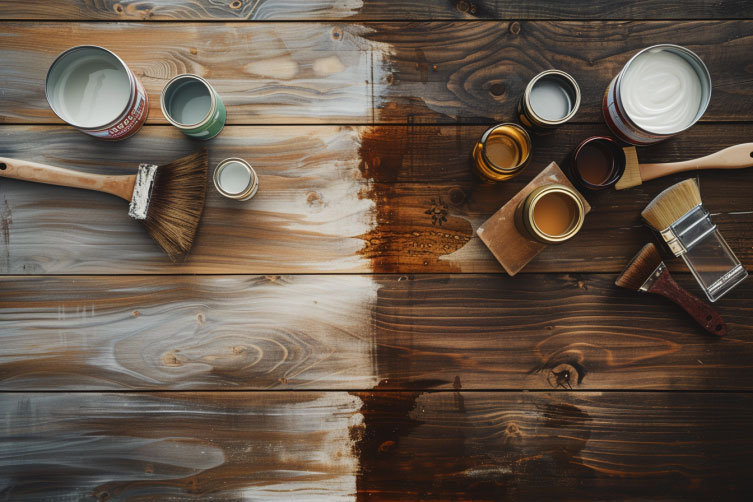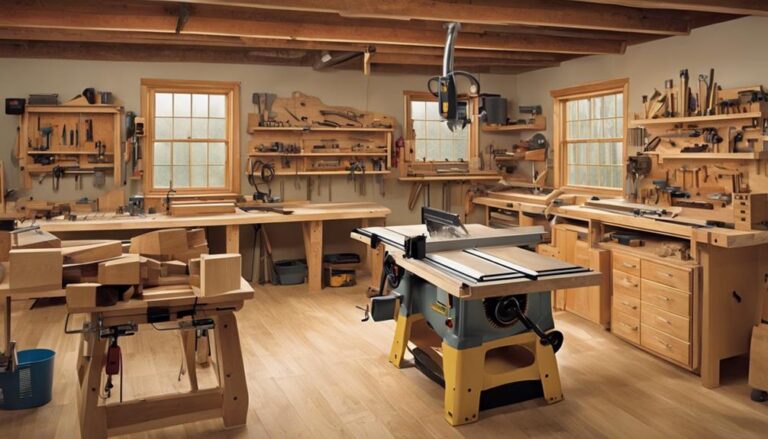Have you ever wondered if the allure of exotic woods truly elevates your crafting projects? As you explore the rich palettes and textures offered by varieties such as mahogany, teak, and ebony, you’ll find each wood brings a unique character and story to your creations.
Crafting with these materials isn’t just about the aesthetic appeal; it’s a journey into understanding the soul of your workpiece. However, the conversation doesn’t end with just selecting the right wood.
The ethical sourcing and sustainability of these exotic woods are crucial aspects that demand your attention, ensuring that your crafting not only results in beautiful pieces but also contributes positively to the environment and communities around the globe.
Contents
The Allure of Exotic Woods
Exotic woods captivate crafters with their unparalleled colors, grain patterns, and durability, offering a touch of rarity and distinction to any project.
When you choose exotic woods, you’re not just selecting a material; you’re embracing a piece of the world’s natural beauty, each with its unique visual appeal. The rich reddish-brown hue of mahogany lends timeless elegance, while teak’s exceptional durability and resistance to weathering make it ideal for outdoor projects.
Ebony, with its deep black color and fine texture, adds a dramatic, luxurious feel. These woods elevate craftsmanship, transforming ordinary projects into stunning, one-of-a-kind pieces.
Their distinctive qualities not only enhance the visual appeal but also ensure that your creations stand the test of time, imbuing them with a sense of exclusivity and sophistication.
Exotic Wood Varieties
Diving into the world of woodworking, you’ll find that Purple Heart wood, with its unmatched durability and striking purple hue, leads the pack of top 10 exotic wood varieties sought after for furniture and flooring projects.
Top 3 Exotic Woods:
- Purple Heart: Originating from Central and South America, it’s celebrated for its exceptional durability and vibrant purple color, making it a prime choice for high-end furniture and flooring.
- Zebrawood: Sourced from West Africa, Zebrawood’s distinctive zebra-like stripes offer an eye-catching pattern ideal for crafting unique furniture pieces and standout cabinets.
- Bubinga: Native to Central Africa, Bubinga boasts reddish-brown hues and captivating grain patterns, favored for musical instruments and luxurious furniture.
These woods provide unmatched qualities for unique and durable woodworking projects.
Crafting Techniques and Tips
After exploring the top exotic woods, it’s crucial to focus on the crafting techniques and tips that will allow you to harness their unique properties effectively.
Understanding the specific gravity of exotic woods, like Gaboon ebony and Cocobolo, is vital for grasping their density and buoyancy, which directly impacts workability.
These woods offer unique visual characteristics, enhancing craftsmanship but also present workability challenges. Bloodwood’s hardness, for example, requires sharp, high-quality tools to manage its density without damaging the wood.
Storing exotic wood properly is essential to preserve its qualities, and considering the cost is crucial for project planning. For crafting high-quality tools and mallets, durable hardwoods such as hard maple and Gabun Ebony are ideal, providing longevity and performance in your crafting projects.
Sustainability and Ethical Sourcing
When selecting exotic woods for your projects, it’s essential to choose suppliers with Forest Stewardship Council (FSC) certification to ensure responsible management of these precious resources. Opting for FSC-certified suppliers guarantees that you’re supporting:
- Sustainable Practices: You contribute to preserving biodiversity and minimizing deforestation’s impact, ensuring the future availability of exotic wood species.
- Ethical Sourcing: By prioritizing suppliers who adhere to ethical sourcing, you help maintain the long-term viability of exotic woods, safeguarding them for future generations.
- Responsible Forestry Practices: Selecting sources with a commitment to responsible forestry practices reduces the environmental impact of exotic wood harvesting.
Incorporating these considerations into your sourcing decisions not only supports eco-conscious choices but also upholds the highest standards of sustainability and ethics in woodworking.
Expanding Horizons in Woodworking
Exploring the realm of exotic woods, such as Gaboon ebony and Cocobolo, opens up unparalleled opportunities for creativity and innovation in woodworking projects. These unique varieties, including Bloodwood, Lacewood, and Bubinga, offer distinct aesthetic and functional qualities for high-quality tools, mallets, and specialty items.
However, they present challenges in workability and tool maintenance due to hardness and specific gravity; Bloodwood, for instance, is notably difficult. Crafting handmade chopsticks from these woods demands precision techniques, like using a tapering jig and paying close attention to the wood grain.
This meticulous process not only ensures quality but also elevates the market potential for your woodworking ventures, driving community engagement with unique, exotic wood creations.
Conclusion
In wrapping up, you’ve explored the captivating world of exotic woods, learning about their unique characteristics, from mahogany’s rich hues to teak’s robustness.
You’ve gained insights into crafting techniques, ensuring your projects not only look stunning but last.
Remember, ethical sourcing is crucial; always seek sustainably harvested woods.
With this knowledge, you’re well-equipped to expand your woodworking horizons, creating pieces that truly stand out.






